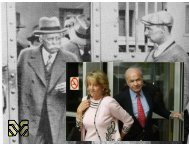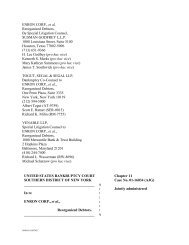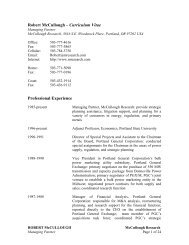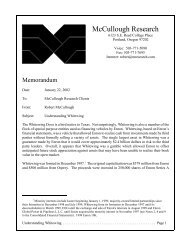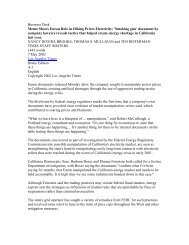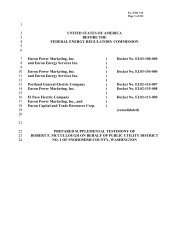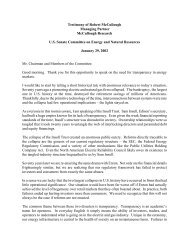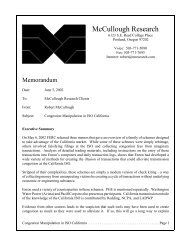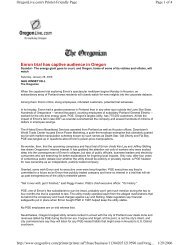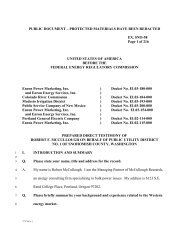Understanding LJM - McCullough Research
Understanding LJM - McCullough Research
Understanding LJM - McCullough Research
You also want an ePaper? Increase the reach of your titles
YUMPU automatically turns print PDFs into web optimized ePapers that Google loves.
As before, Andrew Fastow would be the general partner. 24 <strong>LJM</strong>2's offering document made very<br />
attractive promises:<br />
It explained that "[t]he Partnership expects that Enron will be the Partnership's primary<br />
source of investment opportunities" and that it "expects to benefit from having the<br />
opportunity to invest in Enron-generated investment opportunities that would not be<br />
available otherwise to outside investors." The PPM specifically noted that Fastow's<br />
"access to Enron's information pertaining to potential investments will contribute to<br />
superior returns." 25<br />
<strong>LJM</strong>2 entered into a wide variety of transactions with Enron. Some of these, Raptors 1,2, and 4 are<br />
taken from the existing model where Enron stock or guarantees were added to an existing merchant<br />
investment. Forecasted appreciation of the stock would offset possible losses in the value of the<br />
merchant investments. As with Swap Sub, the economic logic of the transaction was very weak. A<br />
fall in the price of Enron stock at the same time as a fall in the value of the merchant investment<br />
would make each of the Raptors unable to honor its “hedge”.<br />
The Raptors were in the nature of a pure gamble, where investors were guaranteed their investment<br />
in weak assets with an infusion of Enron stock or the promise of Enron stock. As Sherron Watkins<br />
wisely noted in her letter to Ken Lay:<br />
Raptor looks to be a big bet, if the underlying stocks did well, then no one would be<br />
the wiser. If Enron Stock did well the stock issuance to these entities would decline<br />
and the transactions would be less noticeable. All has gone against us. 26<br />
There is no question that her characterization was correct. The Powers Report clearly indicated that<br />
this mechanism was little more than a speculation in Enron’s own stock. 27<br />
Raptor 3 took this concept even further. Raptor 3's logic is so attenuated that it is surprising that it<br />
passed even the most cursory review. Raptor 3 was designed to hedge Enron’s investment in The<br />
24 Powers Report, page 71.<br />
25 Powers Report, page 72.<br />
26<br />
Watkins letter, page 3.<br />
27<br />
In three of the four Raptors, the vehicle's financial ability to hedge was created by Enron's transferring its<br />
own stock (or contracts to receive Enron stock) to the entity, at a discount to the market price. This "accounting"<br />
hedge would work, and the Raptors would be able to "pay" Enron on the hedge, as long as Enron's stock price<br />
remained strong, and especially if it increased. Thus, the Raptors were designed to make use of forecasted future<br />
growth of Enron's stock price to shield Enron's income statement from reflecting future losses incurred on merchant<br />
investments. This strategy of using Enron's own stock to offset losses runs counter to a basic principle of accounting<br />
and financial reporting: except under limited circumstances, a business may not recognize gains due to the increase<br />
in the value of its capital stock on its income statement. Powers Report, page 97.<br />
<strong>Understanding</strong> <strong>LJM</strong> ....................................................... Page 9



